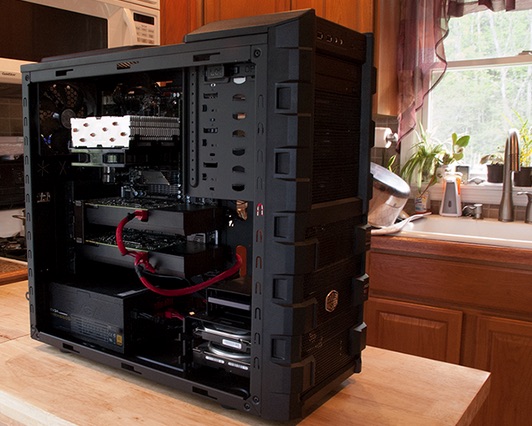![When you build your own computer, the potential for customization is vast. [Andrew Park]](http://www.jstudentboard.com/reporter/wp-content/uploads/2015/10/10.17.2015-300x240.jpg)
SungHo Oh, a junior attending Whimoon High School in Seoul, shared his frustration about trying to find the perfect computer.
Oh told JSR, “There are too many variables. Every option has enormous pros and cons. By committing to laptops, you are guaranteed to sacrifice performance and price for mobility. Pre-built desktops from companies such as Samsung and Dell are extremely mediocre for their price. They will be slow in a year, and unbearable in two years.”
Although building your own desktop might sound fanciful and complicated, the process isn’t as hard as it seems. Once you have the components selected, the assembly is really easy. Invest a couple hours, and you can plan a desktop that will last for years.
Ali Baluach, a freshman computer engineering student at Cornell, gave JSR a quick insight into the process, saying that first “you need to set a budget. Start drafting the combinations of the best components that fit your budget. Choose the Central Processing Unit (CPU), Motherboard (MOBO), Memory (RAM), Hard Disk Drive (HDD) or Solid State Drive (SSD), Video card (GPU), Power Supply Unit (PSU), and a case.”
“When I built my first PC four years ago,” he continued, “I felt like I was drafting [an All Star team on a sports videogame]. You select the quality parts [and] the process itself is enjoyable and fun. The educational value is great too. After I finished, I knew the purpose of each component and how they all fit together in the motherboard.”
You are likely to save money by building your own computer. Within a set budget, you will often get higher quality components. Companies try their best to use their own components rather than the best components available in the market, and Forbes Tech and IGN say that consumers can save from 30 to 40 percent by avoiding pre-made machines by Dell, Hewlett-Packard, or others.
Consumers can also avoid planned obsolescence with custom builds. Planned obsolescence, or product cycling, is the policy of designing products with artificially limited lifespans; as products become obsolete, companies release “upgraded” versions and make new profits from people who are already customers.
Pre-built computers often demonstrate planned obsolescence. Apple, for example, has been accused of product cycling because it pushes operating system updates for its phones and computers that can diminish the performance of older devices. Pre-built desktops also don’t allow for easy part replacements, as manufacturers emphasize compatibility over all else. To replace a single component, customers must replace the whole computer. Yet those who build their computers can simply replace outmoded components over time.
Some argue that pre-built computers are better because they come with customer support that assists users when challenges arise. However, spending time researching the optimal build and putting together a computer gives users insight into its inner workings. Next time something goes wrong with the computer, or any computer in the house, you’ll be much more competent to diagnose and fix the problem if you’ve built your own computer. You can be your own customer support!
Others claim that building your own computer is only advantageous for Windows or Linux users because “Hackintosh” systems – computers that run Macintosh operating systems on hardware not made by Apple – are illegal.
However, the Digital Millennium Copyright Act allows users to modify their lawfully-owned hardware and software in any way they wish, as long as they aren’t selling the modified products. So although the end-user license agreement for OS X states that it should only be used on Apple hardware, Apple has only legally pursued companies like Psystar that profit from selling Hackintoshes. For individual users who rely on OS X specific programs such as Final Cut or Logic, building a Hackintosh is viable, safe, and effective.
Next time you need a new computer, try to build your own desktop. Not only will you earn a unique experience, but you will save money, customize your computer, and escape the vicious cycle of pre-built computers and their planned obsolescence.

